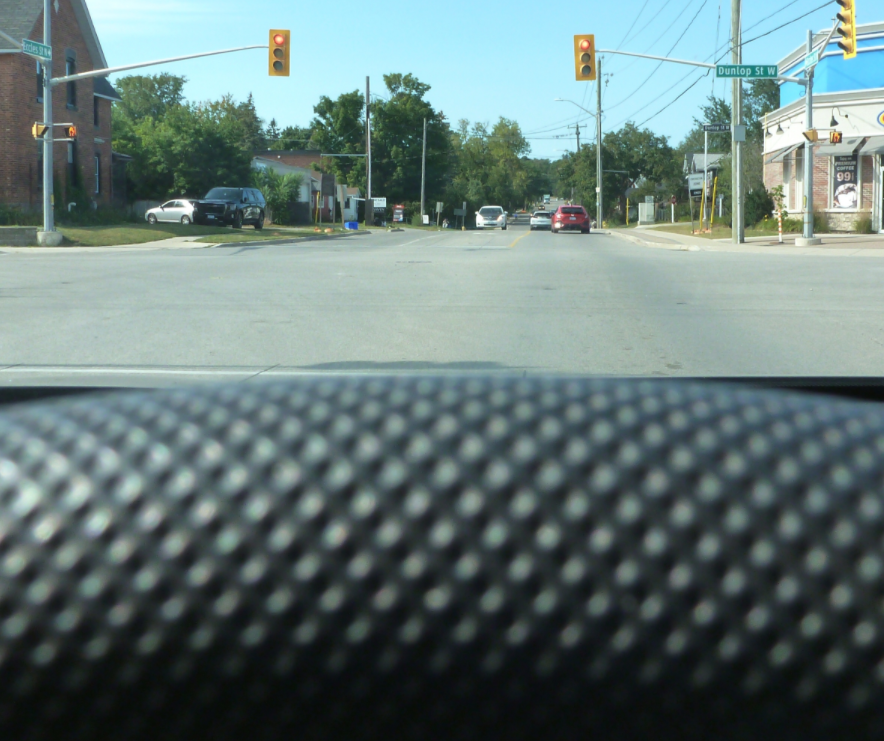When you finally get the green light to drive forward on Barrie streets, why is it often followed by a red light at the next intersection?
Not every time, but enough to raise your irritation level, sometimes to a near-boiling point.
Aren’t city traffic lights supposed to be synchronized so one green light is followed by another, then another, to keep traffic flowing efficiently?
The simple answer? Not necessarily.
Steve Rose, the city’s manager of traffic and parking, says it’s not just about the colour of lights.
“The intersection is set up to be as efficient as it can, but for the dominant flow of traffic,” he told BarrieToday. “The percentages are you’re going to stop at a red (light) if you’re not travelling with the dominant flow of traffic. Obviously, it’s most environmentally friendly to move the most amount of vehicles that are all travelling in the same direction more efficiently, rather than the odd car on the side street.
“But even when you stop at the stoplights, it’s a go signal for somebody else," Rose added.
Take the downtown intersection of Collier and Owen streets, for instance. Both two-lane streets, tight confines, with parking spaces.
“In the case of Collier… we set up so it’s green and it will be green for 365 days a year, until (a pedestrian) pushes the push-button (for the walk signal) or a vehicle hits the (Owen Street) sensor," located at the painted stop bars, typically 10 metres long and a rectangle, Rose said.
“But for every vehicle that approaches and hits, going over that sensor in the ground, it adds time… say three or four seconds, and it goes to a maximum time. Or if a pedestrian pushes the button, the pedestrian automatically gets the maximum time to cross the street. It’s based on walking speed and distance for crossing the road," he said.
Or take Bayfield Street, one of Barrie’s busiest roadways because it’s lined with shopping malls and plazas — but also because it connects motorists with Highway 400.
“The flow (of traffic) in the morning is going toward the highway,” Rose said. “And then around lunch time it’s sort of a balanced flow, and then in the evening it’s people coming away from the highway.
“We’re trying to co-ordinate the (traffic) signals based on flows, that if 2,000 cars are going one way on Bayfield and 400 are coming southbound, they (some on the 400) might be the people who are the most vocal because they’re stopping,” he said. “It’s not necessarily set up for them because we have five times the traffic flow opposing them.”
Speed limits also figure into traffic light co-ordination, since Barrie has zones of 40 kilometres an hour, 50 km/h and 60 km/h.
“It’s based on arrival times, so it’s a software program that says if you’re going to leave here at green, and it’s 290 metres to the next intersection, based on the speed limit it takes 'X' amount of seconds for you to get here to there,” Rose explained. “And so that’s how the speed limit is factored in.
“It’s factoring in the signal timing and when we’re trying to make things go green. If you’re travelling eastbound on Mapleview Drive, someone’s travelling westbound on Mapleview, so it’s trying to find when’s the optimal time for that signal to go green.”
The city has a new centralized traffic system that was rolled out late last year. It replaces a dial-up modem with a cellular-based system that allows the city to put more intersections in its system and has better tools to analyze them.
“We have sensors in the roadway, sometimes they malfunction and the system can now report back to us… so it’s a subtle thing like that,” Rose said. “We send out our maintenance crew, they fix it and therefore in the middle of the night, you’re not stuck waiting (for a green light).
“We can see the Mapleview Drive/400 off-ramp. Is it using all of the time from a green light? If not, we can reallocate that time to a different direction.”
Rose says his department gets complaints about traffic lights out of order or not properly synched. They come in bunches and are often seasonal. Sometimes it’s the 3 a.m. motorists, sometimes it’s snow-plow drivers.
Traffic is fluid — pardon the pun — and Barrie's traffic patterns have changed as the city grows in population and density, as have the methods to deal with it.
“We’re excited to see how the Harvie Road bridge opening impacts southern Barrie,” Rose said.
Opened earlier this summer, the crossing connects Harvie Road to Big Bay Point Road over the 400. The bridge has five lanes for vehicle traffic, two separate lanes for bicycles and two sidewalks for pedestrians.
The $76-million crossing can handle 20,000 vehicles a day and is designed to significantly reduce traffic volumes on Essa Road, Mapleview Drive and other streets in the area.
Rose says his department did traffic counts in the area before the bridge opened and in August. More counting is planned for September’s end.
“What’s been the impact on Mapleview Drive?” he asked. “We’ll get all new counts on how people are driving and how that compares against current signal time and look to see what we can do to improve signal timing.
“But there are so many random variables.”



